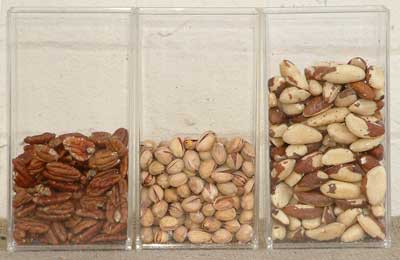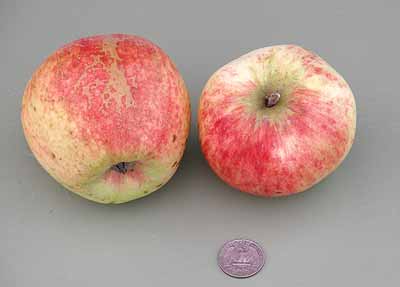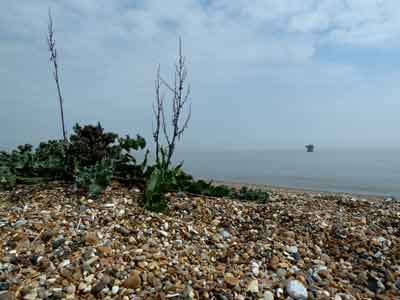
Pistachio nut. The fruits of a small tree which originated in Central Asia, probably eastern Syria, but which is now widely cultivated. Just before harvest pistachios are enclosed in a green and magenta fleshy cover. These are the very best, if you can get them. However, fresh pistachios are rarely seen, mainly because they have a short shelf-life. They are usually hulled and dried, after which they are either roasted or roasted and salted. For cooking use the ones which are not already salted. They are sold in their creamy beige shells, which split as they ripen. The shells should be removed and the purple papery skins rubbed off revealing the bright green kernels within, the greener the better. They are related to both the cashew and the mango.
The Alewife is a migratory fish very similar to the herring, with silvery skin and strong flavour, abundant on the east coast of North America. It has a single spot on each side, behind the operculum and is deeper in the body than a herring. It is available smoked or pickled. The last stop on the Red Line of the Boston 'T' is Alewife, presumably indicating that a lot of these fish used to be landed in Boston.
Alewife is used in the Chesapeake Bay as a name for menhaden, which is confusing. Menhaden is an oily fish of American Atlantic waters, it has a large head with no scales and a blotch just behind the operculum with more irregular dots behind. Its back is dark, with blue or green or brown shades, and the sides are silver with a bronze sheen. Menhaden are used mainly for fertiliser or as bait being almost too oily for human consumption, though they have been tinned under various misleading names.

A variety of good-looking, large, red-flushed blushed, dual-purpose apple with white flesh from the Ukraine, known in the 1700s. It was introduced commercially into England in 1805 by James Lee of a nursery in Hammersmith and sent on to Massachusetts in 1817. Cooks to a lemon-coloured purée. This mid-season variety is picked from mid-September in South-East England and has poor storage properties though may be eaten until late October. In the United States it is picked from August. Many apples were taken from Russia to various northern parts of the world in the early 1800s to see if they would be cold hardy.

Alexanders or black lovage is a plant with myrrh- and celery-like flavour from the same family as cow parsley. Stems can be prepared as a vegetable and served with butter and black pepper and the roots boiled or candied. It is related to the weed "fat hen" which is used as chicken feed. It can also be used as a substitute for spinach, though the leaves are a little sparse.
A wine-producing region in northern Sonoma County in California, making wines from Chardonnay, Cabernet Sauvignon, Merlot, Gewürztraminer, Johannesburg Riesling and Zinfandel grapes.
An Alpine strawberry which bears large fruits for alpines, which are very juicy with good flavour, but with low yield.